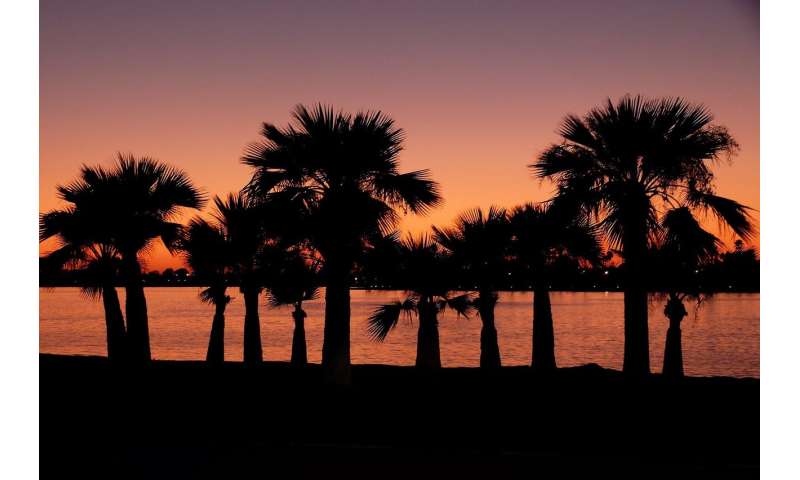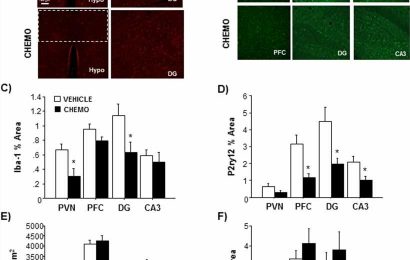
George Cruz relaxed at an outdoor beach restaurant as a waitress wearing a face covering rushed by, carrying a tray with a Pina Colada in a pineapple-shaped cup. An employee in a face covering stood nearby with cleaning supplies in his gloved hand, ready to sanitize any empty tables.
The odd mix of pumping music, cocktails and health precautions did not seem to deter anyone. Beach House Grill—known for its ocean views and fire pits—was already filling up on a sunny afternoon less than 24 hours after San Diego County was given permission by the state to allow dine-in restaurant service.
Cruz could only imagine the crowds over the holiday weekend.
“That’s why we decided to come now,” said the engineer who was dining with his wife and 6-year-old daughter. “There definitely will be a surplus of people at the beach,” adding that they will be staying home. “I just hope everybody is smart about how they go out.”
Millions of Californians are heading into the Memorial Day weekend with both excitement and anxiety after restrictions to control the spread of coronavirus were eased across much of the state. The coinciding factors are sure to test the nation’s most populous state, which has just started seeing a decline in COVID-19 hospitalizations.
California was the first in the U.S. to issue such a statewide mandate, and it was among the last to loosen restrictions.
At least 45 of the state’s 58 counties are just starting to go beyond takeout service and curbside shopping in the most drastic scaling back of the stay-at-home orders since the governor issued them in mid-March. They include Riverside and Sonoma counties, which won approval Friday to join the others moving deeper into the second of a four-stage reopening plan because they have met state standards for controlling the virus.
Police, lifeguards and other officials were warning people to not forget about the seriousness of the virus as they enjoy their first weekend of newfound freedom.
Gov. Gavin Newsom vowed to relax more restrictions soon. He said he anticipated guidance would be completed by Monday for how to reopen places of worship safely and the state is within days of “announcing a loosening of our stay-at-home order for barbershops and salons.”
But he added caution is still needed. Speaking Friday from a veterans home in Yountville that lived through second and third waves of outbreaks during the 1918 flu pandemic, Newsom warned people not to be fooled “just because the sun has come up and there’s a sense of optimism, that there’s more light.”
“There’s also another reality that is stubborn, and that is the virulence of this disease remains and lives are continuing to be lost,” he said.
The state is still seeing troubling flare-ups. In Northern California, Santa Cruz County’s public health officials were investigating four separate clusters of COVID-19 cases involving family gatherings, including a multi-generational Mother’s Day party and a large gathering involving individuals who traveled from out-of-state.
Popular getaway communities, like around Northern California’s Lake Tahoe, were asking visitors to still stay away.
Others, like Joshua Tree National Park, which re-opened this week, were bracing for the anticipated wave of adventure-starved hikers and campers.
The mountain destination of Big Bear Lake announced officials would not enforce the governor’s orders, arguing it has kept COVID-19 cases manageable while the economy has suffered.
Others were ready to call out violators. Seal Beach, south of Los Angeles, is deploying two-officer teams to beaches to solely enforce virus-controlling rules.
Police also will be assisting San Diego lifeguards. At an already busy Mission Beach ahead of the weekend, a lifeguard over a loudspeaker warned people that the boardwalk was closed and to keep moving to the beach where only walking and jogging are permitted. The ocean is open too, he said.
Nearby, Cailyn Meimer popped out of a shop selling bikinis, beach blankets and now face coverings. She said it felt good to be going into a store for something other than groceries.
Until now, “it felt almost like we would not be going back to normal,” she said.
Still, the 21-year-old student wasn’t sure she was ready for restaurant dining yet.
Restaurants were scrambling to space apart tables—including some eateries without patios that were creating alfresco dining in their parking lots.
In San Francisco, city officials drew large chalk “social distancing” circles on the grass at parks to show people where to sit. Dolores Park has seen large masses of people on sunny weekends, prompting Mayor London Breed to warn that she would shut it down if people weren’t more responsible.
David Spatafore, who owns Blue Bridge Hospitality restaurant group, said the social distancing floor decals arrived just in time for San Diego’s Liberty Public Market. It reopened patio seating Friday.
The sprawling market with 30 vendors, including wine bars, bakeries and taco stands, has been doing takeout. But now people can browse its shops selling locally made art, jewelry, and clothing.
Spatafore also planned to open patio seating at the group’s pizzerias and the dining rooms at its high-end steakhouse in Coronado, across the bay from San Diego.
“I think people are going to be so happy to be able to go back out and not eat out of a plastic container or cardboard box,” he said. “I know I am. I’m over the compost-able clam shell.”
Weeks ago, Spatafore ordered head-scan thermometers to check employees’ temperatures and was happy he did because there are shortages now. He hooked up with local brewers that have started producing hand-sanitizer to stock up.
At the market, additional hand-washing sinks were being installed, friendly reminders were posted and staff was trained to enforce rules.
“Hopefully people will self-police,” he said.
Near San Diego’s Mission Beach, Laura Garcia sat at an outdoor table at a Mexican restaurant and relished in the people watching, the sun on her back and the fresh air.
Source: Read Full Article


